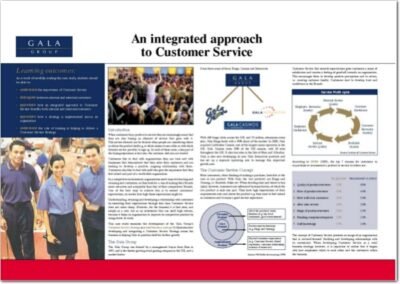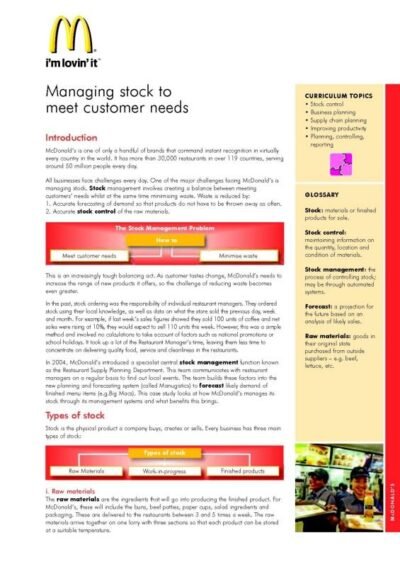Market capitalisation weighting is a method used to determine the relative size of companies within a stock market index. This approach assigns weights to individual stocks based on their total market value, which is calculated by multiplying the current share price by the total number of outstanding shares. Consequently, larger companies have a more significant influence on the index’s performance than smaller ones.
This method is prevalent in many well-known indices, such as the FTSE 100 and the S&P 500, where the largest firms can dominate the index’s movements. The rationale behind market capitalisation weighting lies in the belief that a company’s size reflects its economic significance and stability. Investors often view larger companies as less risky due to their established market presence and financial resources.
As a result, indices that utilise this weighting method tend to reflect the broader market’s performance more accurately, as they are heavily influenced by the largest and most stable companies. However, this approach can also lead to skewed perceptions of market health, particularly during periods of volatility when a few large firms may disproportionately affect overall index performance.
Summary
- Market capitalisation weighting is a method of determining the weight of each stock in an index based on its market capitalisation.
- Market capitalisation weighting is calculated by dividing the market capitalisation of a stock by the total market capitalisation of the index.
- Advantages of market capitalisation weighting include reflecting the true market value of a company and being easy to implement and maintain.
- Disadvantages of market capitalisation weighting include overexposure to overvalued stocks and underexposure to undervalued stocks.
- Market capitalisation weighting is compared to other indexing methods such as equal weighting and fundamental weighting.
How Market Capitalisation Weighting is Calculated
Calculating market capitalisation weighting involves a straightforward formula. The market capitalisation of each company within the index is determined by multiplying its share price by the number of outstanding shares. Once the market capitalisations of all companies in the index are calculated, the total market capitalisation of the index is obtained by summing these values.
Each company’s weight in the index is then derived by dividing its individual market capitalisation by the total market capitalisation of all companies in the index. For example, consider an index comprising three companies: Company A with a market capitalisation of £100 million, Company B at £50 million, and Company C at £25 million. The total market capitalisation of this index would be £175 million (£100 million + £50 million + £25 million).
The weight of each company would be calculated as follows: Company A would have a weight of approximately 57.14% (£100 million / £175 million), Company B would represent about 28.57% (£50 million / £175 million), and Company C would account for roughly 14.29% (£25 million / £175 million). This calculation illustrates how larger companies can dominate an index’s performance due to their higher weightings.
Advantages of Market Capitalisation Weighting

One of the primary advantages of market capitalisation weighting is its simplicity and ease of understanding. Investors can quickly grasp how much influence each company has on the overall index based on its size. This transparency allows for straightforward comparisons between different indices and facilitates investment decisions.
Additionally, because larger companies tend to be more stable and less volatile, market capitalisation-weighted indices can provide a more reliable representation of overall market trends. Another significant benefit is that this method inherently adjusts for changes in company size over time. As companies grow or shrink in value, their weights within the index automatically change, ensuring that the index remains reflective of current market conditions.
This dynamic nature allows investors to track performance without needing to frequently rebalance or adjust their portfolios manually. Furthermore, since larger companies often have more resources for research and development, they may be better positioned to innovate and adapt to changing market conditions, which can lead to sustained growth over time.
Disadvantages of Market Capitalisation Weighting
Despite its advantages, market capitalisation weighting is not without its drawbacks. One notable disadvantage is that it can lead to an over-concentration of investments in a few large companies. When a small number of firms dominate an index, their performance can disproportionately influence the overall results, potentially masking the performance of smaller companies that may be experiencing growth or innovation.
This concentration risk can be particularly pronounced during market downturns when large firms may face challenges that smaller firms do not. Additionally, market capitalisation weighting can create a lag in reflecting true market conditions. For instance, if a large company experiences a significant decline in its stock price due to poor earnings or other negative news, it may still retain a substantial weight in the index for some time if its market capitalisation remains high relative to other companies.
This situation can lead to an index that does not accurately represent the broader market sentiment or economic realities, potentially misleading investors who rely on these indices for decision-making.
Market capitalisation weighting is just one of several indexing methods used in financial markets. Another common approach is equal weighting, where each company in an index has the same weight regardless of its size. This method can provide a more balanced representation of smaller companies and may lead to higher returns during certain market conditions, as it allows for greater exposure to growth opportunities among lesser-known firms.
However, equal weighting also comes with increased volatility and requires more frequent rebalancing to maintain equal weights. Price weighting is another alternative, where stocks are weighted according to their share price rather than their market capitalisation. The Dow Jones Industrial Average is a well-known example of a price-weighted index.
In this case, higher-priced stocks have a greater influence on the index’s performance than lower-priced ones, which can lead to distortions if high-priced stocks do not necessarily reflect overall company value or performance. Each indexing method has its own set of advantages and disadvantages, making it essential for investors to consider their investment goals and risk tolerance when choosing an approach. While market capitalisation weighting offers simplicity and reflects larger companies’ stability, equal and price weighting methods may provide alternative perspectives on market dynamics that could be beneficial under certain circumstances.
Examples of Market Capitalisation Weighted Indices
UK’s FTSE 100: A Key Indicator of Economic Health
The FTSE 100, which represents the 100 largest companies listed on the London Stock Exchange, is one such example. The index includes well-known firms such as BP, HSBC Holdings, and Unilever, which collectively account for a significant portion of the UK’s stock market value.
The S&P 500: A Representation of the US Equity Market
Another notable example is the S&P 500, which comprises 500 of the largest publicly traded companies in the United States. This index is widely regarded as one of the best representations of the US equity market and includes major players like Apple, Microsoft, and Amazon.
Market Capitalisation Weighting: Perceptions and Pitfalls
The S&P 500’s performance is closely monitored by investors globally, as it reflects broader economic trends and investor sentiment in one of the world’s largest economies. Both indices illustrate how market capitalisation weighting can shape perceptions of economic health and investment opportunities. However, they also highlight potential pitfalls associated with this methodology, particularly regarding concentration risk and reliance on a few dominant firms.
Impact of Market Capitalisation Weighting on Investment Strategies

The prevalence of market capitalisation weighting has significant implications for investment strategies employed by both institutional and retail investors. Many fund managers use indices like the FTSE 100 or S&P 500 as benchmarks against which they measure their performance. Consequently, investment strategies often revolve around replicating these indices through passive management techniques or exchange-traded funds (ETFs) that track their movements.
However, this reliance on market capitalisation-weighted indices can lead to herd behaviour among investors, where decisions are driven by trends rather than fundamental analysis. As large companies dominate these indices, there may be an inclination to invest heavily in them simply because they are part of a well-known benchmark. This phenomenon can create bubbles around certain stocks or sectors while neglecting smaller firms with strong growth potential.
Moreover, understanding how market capitalisation weighting influences indices can help investors identify opportunities for active management strategies that seek to exploit inefficiencies within the market. By recognising when large-cap stocks may be overvalued or when smaller companies are undervalued relative to their growth prospects, investors can position themselves strategically to benefit from potential shifts in market dynamics.
The Future of Market Capitalisation Weighting in the Financial Markets
As financial markets continue to evolve, so too will the methodologies used for indexing and investment strategies. While market capitalisation weighting remains dominant today, there is growing interest in alternative approaches that address some of its inherent limitations. For instance, factors such as environmental sustainability and social responsibility are becoming increasingly important to investors, leading to the development of indices that incorporate these criteria alongside traditional financial metrics.
Additionally, advancements in technology and data analytics are enabling more sophisticated approaches to indexing that consider various factors beyond mere size or price. Smart beta strategies are gaining traction as they seek to combine elements of both active and passive management by focusing on specific factors such as value, momentum, or volatility while still maintaining some level of diversification. In conclusion, while market capitalisation weighting has played a crucial role in shaping modern financial markets and investment strategies, its future will likely involve greater integration with alternative methodologies that reflect changing investor preferences and evolving economic landscapes.
As investors become more discerning about where they allocate their capital, understanding these dynamics will be essential for navigating an increasingly complex financial environment.
Market capitalisation weighting is a popular method used by investors to determine the weight of a particular stock in a portfolio based on its market value. This strategy is crucial for maintaining a balanced and diversified investment portfolio. In a related article on businesscasestudies.co.uk, the top three factors to consider when starting a new business are discussed in detail. Just like market capitalisation weighting, these factors play a significant role in the success and growth of a startup. By understanding and implementing these factors, entrepreneurs can make informed decisions that will help their businesses thrive in the competitive market.
FAQs
What is market capitalisation weighting?
Market capitalisation weighting is a method of determining the relative importance of individual stocks within a stock market index. It is calculated by taking the market capitalisation of each stock and dividing it by the total market capitalisation of the index.
How is market capitalisation weighting calculated?
Market capitalisation weighting is calculated by taking the market capitalisation of each stock in the index and dividing it by the total market capitalisation of the index. This gives each stock a weight in the index based on its relative size in the market.
What is market capitalisation?
Market capitalisation, or market cap, is the total value of a company’s outstanding shares of stock. It is calculated by multiplying the current share price by the total number of outstanding shares.
What are the advantages of market capitalisation weighting?
Market capitalisation weighting allows for the representation of the overall market in an index, as larger companies have a greater impact on the index’s performance. It also reflects the market’s consensus on the value of each company.
What are the disadvantages of market capitalisation weighting?
One disadvantage of market capitalisation weighting is that it can lead to overexposure to overvalued stocks and underexposure to undervalued stocks. It also means that the index is heavily influenced by the performance of a few large companies.
 OPITO A3 ePoster Edition 16 "Roles and Responsibilities"
OPITO A3 ePoster Edition 16 "Roles and Responsibilities"  Using new product development to grow a brand (MP3)
Using new product development to grow a brand (MP3)  An integrated approach to Customer Service (PDF)
An integrated approach to Customer Service (PDF)  CMI A3 ePoster Edition 15 "The importance of effective management"
CMI A3 ePoster Edition 15 "The importance of effective management"  Managing stock to meet customer needs (PDF)
Managing stock to meet customer needs (PDF) 